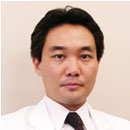
In this series, I would like to focus mainly on metabolic syndrome. Metabolic syndrome is a serious issue in modern society since it is related to various health problems.
The incidence of arteriosclerosis is rapidly increasing in developed countries, including Japan and other Asian nations, due to overnutrition and insufficient physical activity. Cerebrovascular event and cardiac disease, which are caused by arteriosclerosis, account for 30% of total causes of death in Japan. In 2002, WHO (World Health Organization) made a statement regarding the importance of preventing cardiac and vascular diseases related to arteriosclerosis.
Hypertension, hypercholesterolemia, diabetes, and smoking are recognized as major risk factors for arteriosclerosis and those relationships have been widely researched. Additionally, recent studies have shown that the risk of arteriosclerosis is greatly enhanced when several of those risk factors are combined. These symptoms commonly occur with overeating and insufficient physical activity, and result in a condition known as “Metabolic syndrome”. Metabolic syndrome is the combination of symptoms such as hypertension, glucose intolerance, or hyperlipidemia, and is highly likely to cause arteriosclerosis.
The most common cause of metabolic syndrome is accumulated visceral fat, which inhibits insulin activity and secretes various kinds of physiologically active substances leading to arteriosclerosis. This condition leads to thrombus formation. Additionally, this condition also causes hypertension and hyperlipidemia. The most effective and efficient means to cure metabolic syndrome is to reduce visceral fat (weight loss).
Do you have metabolic syndrome? It became necessary to determine a simple and comprehensive definition for metabolic syndrome for diagnosis. By 2004, the criteria for the diagnosis of metabolic syndrome was established by consensus among a wide variety of medical societies of Japan. The goal for defining the criteria was to help lower the incidence of cardiac and vascular disease, both of which have recently increased due to the trend of overnutrition.
Metabolic syndrome is defined as the presence of two or more of the following conditions: hyperlipidemia, hypertension, or glucose intolerance, in addition to excess visceral fat accumulation. As I mentioned, this illness is mainly caused by accumulated visceral fat. Precise visceral fat area can be measured by CT, but it is inconvenient method. Therefore, waist circumference was chosen as an index for the visceral fat area, since it is relevant. Patients with a visceral fat area surpassing 100 cm2 as measured by CT, are diagnosed with metabolic syndrome because they are highly prone to various complications. It is the equivalent of a waist circumference over 85 cm in men or over 90 cm in women.
Another definition for metabolic syndrome includes a person who has the above-mentioned waist circumference plus two or more of the following symptoms: hypertriglyceridemia(≧150mg/dl) and/or low HDL cholesterol (< 40mg/dl), hypertension (systole ≧ 130mmHg and/or diastole ≧ 85mmHg) or fasting hyperglycemia (≧ 110mmHg).
Are you suffering from metabolic syndrome? Pay careful attention to your symptoms!

Masahito Hitosugi, M.D., Ph.D.
Professor, Department of Legal Medicine
Shiga University of Medical Science
Education:
Graduate School of Medicine, Jikei University, Tokyo, Japan, M.D., Ph.D. (Dr. of Medical Science), 2000.
Residency:
Kawasaki Municipal Hospital (Internal Medicine), Kanagawa, Japan, 1994-1996.
License and Certification:
License of Medical Doctor (No. 367818), Japan Ministry of Health, Labour and Welfare, 1994.
Authorized Dr. of Medical Autopsy (No. 7189), Japan Ministry of Health, Labour and Welfare, 1999.
Authorized Dr. of Forensic Medicine (No. 100), Japanese Society of Legal Medicine, 2002.
The 1st grade of the Examination of Proficiency in English for Medical Purposes (No. 3), The Japan Society for Medical English Education, 2008.
・No.2 What causes metabolic syndrome?
・No.1 Why has metabolic syndrome been drawing greater attention?
・No.6 Health foods to prevent thrombosis
・No.5 Natto, a preventive measure against thrombosis
・No.4 Improving eating habits to prevent thrombosis
・No.3 Have You Heard of Traveler’s Thrombosis?